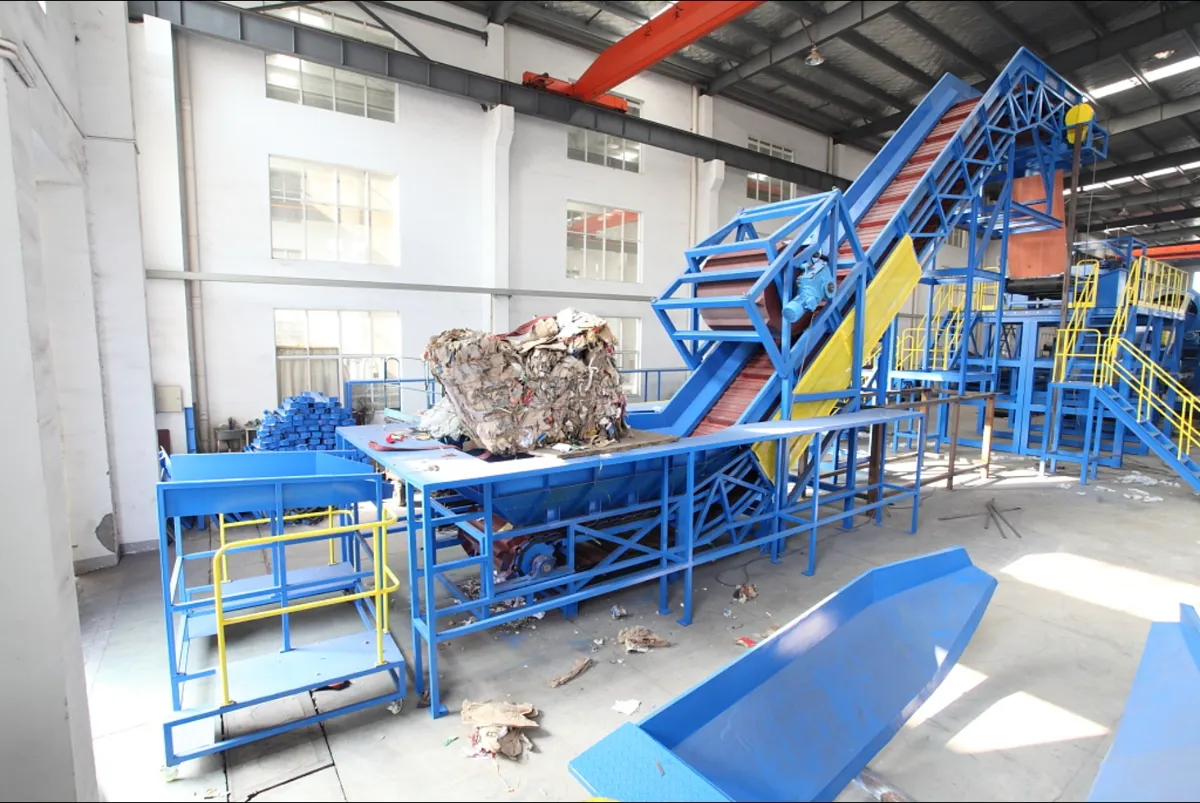Definition and Purpose
A Chain Waste Conveyor is a specialized type of conveyor system designed for transporting waste materials in various industrial and municipal settings. It’s an essential component in waste management and recycling facilities. The conveyor utilizes a chain-driven mechanism to move waste along a predetermined path, making it suitable for handling heavy loads and a variety of waste materials.
Key Components
- Chain Mechanism: The core element that drives the conveyor, typically robust to handle heavy loads.
- Conveyor Frame: Structurally supports the entire system and guides the chain and waste material.
- Drive System: Includes motors and gearboxes that power the chain movement.
- Loading and Discharge Points: Specific areas where waste is loaded onto and discharged from the conveyor.
- Control System: Manages the operation, speed, and direction of the conveyor.
How It Works
The Chain Waste Conveyor operates by moving a heavy-duty chain looped around a series of sprockets. Waste materials are loaded onto the conveyor and are transported along the system’s path as the chain moves. The design of the conveyor allows it to handle a variety of waste types, including bulky and heavy materials.
Applications
- Waste Management Facilities: Transports waste for sorting, processing, or disposal.
- Recycling Plants: Moves recyclable materials through different stages of the recycling process.
- Industrial Plants: Used in manufacturing settings for waste removal.
- Construction and Demolition Sites: Handles construction debris and waste.
Advantages
- Durability: Designed to withstand heavy loads and abrasive materials.
- Efficiency: Streamlines the process of waste transport and handling.
- Versatility: Can be used with various types of waste materials.
- Customization: Can be tailored to specific operational requirements, including length, width, and path.
Maintenance and Safety
Regular maintenance is crucial for the Chain Waste Conveyor’s longevity and safety. This includes inspecting the chain, lubricating moving parts, and ensuring safety guards and emergency stops are functioning properly. Operators should be trained in safe handling and emergency procedures.
Conclusion
The Chain Waste Conveyor is a vital component in modern waste management and recycling operations. Its robust design, efficiency in handling a wide range of waste materials, and customization options make it an indispensable tool for industries dealing with waste transport and processing.
INQUIRIES
To get the latest prices and lead times, send us a message using the form below.



